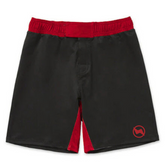WWE Wrestlers Who Train BJJ: 10 Stars with Jiu-Jitsu Skills
Professional wrestling has always thrived on spectacle. But in recent years, fans have become more interested in the real combat sports background of their favorite stars. One martial art that has quietly influenced many WWE wrestlers is Brazilian Jiu-Jitsu (BJJ). It is known for its focus on leverage, submissions, and ground control. BJJ has shaped the way several wrestlers approach their craft, both in training and in the ring.
From donning the Gi in traditional practice to rolling in No-Gi grappling, these stars have discovered that Jiu-Jitsu builds more than submissions. BJJ develops stamina, discipline, and authenticity. In this article, we will explore 10 WWE wrestlers with BJJ skills and how their training influences their wrestling. Moreover, we will see why this martial art has become such a valuable tool for performers.
Why BJJ Matters in WWE
- Authenticity: Fans recognize real grappling. When a superstar applies a choke or submission rooted in BJJ, it looks far more convincing than a staged imitation.
- Safety: Wrestlers trained in BJJ know how to apply pressure while protecting opponents. Hence, keeping performances safer.
- Conditioning: Rolling on the mats in Gi or No-Gi training pushes cardio, flexibility, and explosiveness. These are the attributes that translate to long, high-intensity matches.
- Storytelling: A submission hold can end a match dramatically. Thus, adding to the narrative of a feud or rivalry.
10 WWE Wrestlers Who Train BJJ
1. MVP (Montel Vontavious Porter)
MVP is one of the most legitimate BJJ practitioners in professional wrestling. He has spent years dedicated to Jiu-Jitsu. He trained rigorously and achieved mastery through countless hours on the mats. His submission techniques, transitions, and positional control reflect true grappling expertise. For MVP, BJJ is more than cross-training. It is a discipline that continues to shape his identity both as a competitor and as a performer.
2. Dave “Batista” Bautista
Long before he became a Hollywood star, Batista fell in love with martial arts. His Brazilian Jiu-Jitsu journey has spanned many years. Moreover, he has proven his dedication through consistent training. Batista is known for his imposing physique. He uses BJJ to balance his natural power with technical finesse. His conditioning, control, and mental discipline all benefit from time spent on the mats. Moreover, his background adds credibility to his persona as a fierce competitor.
3. The Undertaker
Fans of the Undertaker remember the chilling “Hell’s Gate” submission. It is essentially a gogoplata adapted from Brazilian Jiu-Jitsu. Behind the scenes, the Deadman trained extensively in grappling. Hence, he learned to use leverage and positioning despite his towering frame. What makes this noteworthy is that heavyweights often struggle with the fluidity of Jiu-Jitsu. But the Undertaker embraced it and successfully wove elements of the art into his legendary career.
4. Shayna Baszler
A former MMA fighter, Shayna Baszler’s entire in-ring style is built around submissions and ground control. She has a background in catch wrestling and judo. Her mastery of Jiu-Jitsu makes her one of the most authentic grapplers in WWE. Moves like the Kirifuda Clutch showcase her ability to blend pro wrestling storytelling with real submission mechanics. Hence, giving her a unique and dangerous aura in the women’s division.
5. Brock Lesnar
Brock Lesnar is known for his dominance in both WWE and MMA. He has trained Brazilian Jiu-Jitsu with elite coaches. While his WWE persona often leans on brute force and suplexes, his submission game from MMA shows the impact of his BJJ training. Lesnar’s grappling experience has given him an unmatched sense of control on the mat. Hence, allowing him to neutralize opponents with both raw power and technical precision.
6. CM Punk
CM Punk’s foray into MMA brought him into direct contact with Brazilian Jiu-Jitsu. While his journey was controversial in the octagon, his commitment to training is undeniable. Punk has spent years practicing BJJ. He earned belt promotions along the way and used that knowledge to add realism to his wrestling. His submissions and reversals in the ring carry more weight thanks to this foundation.
7. Samoa Joe
Samoa Joe’s reputation as a dangerous submission artist stems partly from his BJJ training. His matches often feature grappling exchanges that feel grounded in reality. Moreover, his ability to control opponents mirrors what practitioners do on the mats. It does not matter if it is locking in the Coquina Clutch or transitioning between holds. Joe’s skill set reflects the calm, methodical approach of Jiu-Jitsu.
8. Eve Torres
Eve Torres stands out as one of the most accomplished female wrestlers with a BJJ background. After leaving WWE, she continued her martial arts journey and became highly skilled in both Gi and No-Gi Jiu-Jitsu. Today, she teaches self-defense programs based on BJJ principles. Thus, highlighting how the art empowers individuals inside and outside competition. Her discipline, technique, and advocacy for martial arts show the long-term benefits of training.
9. Shane McMahon
Shane McMahon is often praised for his daredevil stunts. He also has legitimate martial arts training. His work with Brazilian Jiu-Jitsu has helped him not only improve his conditioning but also expand his technical arsenal. He does not often rely on submissions in the ring. Instead, his grappling knowledge allows him to perform spots more safely and add authenticity to his physical storytelling.
10. Karrion Kross
One of WWE’s newer stars to embrace BJJ is Karrion Kross. His training in Jiu-Jitsu has elevated his conditioning and given him a broader range of grappling techniques. The intensity and methodical pace he brings to matches echo the patience and strategy of BJJ. Kross represents a new wave of wrestlers who blend martial arts legitimacy with professional wrestling performance.
How BJJ Influences WWE Styles
- Submissions as Finishers: Moves like Undertaker’s Hell’s Gate or Baszler’s Kirifuda Clutch are direct adaptations of Jiu-Jitsu techniques.
- Ground Control: Wrestlers trained in BJJ know how to transition between positions. Hence, making mat sequences look more fluid and believable.
- Safety Awareness: Applying pressure without injury is a hallmark of BJJ. And this skill makes WWE’s scripted submissions safer for performers.
- Conditioning Edge: Grappling drills, sparring, and rolling push cardiovascular endurance to levels that prepare wrestlers for long main-event matches.
Deep Dive: Belt Ranks, Gi vs No-Gi, Typical BJJ Skills vs WWE Application
| Aspect | In Brazilian Jiu-Jitsu | How WWE Stars Apply It |
|---|---|---|
| Gi vs No-Gi | Training in the Gi allows collar chokes, lapel grips, and technical control. No-Gi is faster, using clinches, underhooks, and wrestling-style scrambles. | Wrestlers with Gi training often use choke variations that look realistic. No-Gi translates into smoother transitions and high-paced grappling sequences in the ring. |
| Belt Ranks | Progression from White → Blue → Purple → Brown → Black, showing years of dedication, mat time, and technical mastery. | Stars like MVP and Batista have advanced ranks that boost their credibility. Fans respect wrestlers with legitimate belts because it shows true martial arts experience. |
| Techniques & Skills | Submissions such as armbars, triangles, leg locks, and chokes; positional control from guard, mount, and side control. | These appear in signature moves like the Undertaker’s Hell’s Gate (gogoplata) or Baszler’s clutch submissions. Even when adapted for show, the mechanics look authentic. |
| Escapes & Defense | Learning to survive under pressure, escape bad positions, and reverse into dominant control. | WWE stars with BJJ training sell submission holds more believably, applying counters or escapes that resemble real grappling exchanges. |
| Training Discipline | Rolling, drilling, and sparring build cardio, flexibility, mental toughness, and problem-solving. | This discipline keeps wrestlers conditioned for long matches, safer in execution, and better prepared for improvisation inside the ring. |
Beyond the Ring: Discipline & Legacy
Brazilian Jiu-Jitsu is not just a tool for building submissions. But it teaches patience, humility, and problem-solving. WWE stars who embrace BJJ find that it grounds them, sharpens their athleticism, and gives them credibility with fans who value authentic combat sports.
As BJJ continues to grow worldwide, more wrestlers are likely to train in the art. Hence, blending the entertainment of professional wrestling with the technical depth of martial arts. The result is a more exciting product for fans and a stronger legacy for the athletes themselves.
Conclusion
From legends like the Undertaker and Batista to modern stars like Shayna Baszler and Karrion Kross, Brazilian Jiu-Jitsu has left a mark on WWE. It does not matter if they are drilling in the Gi, rolling No-Gi, or adapting submissions into dramatic finishers. These wrestlers show how BJJ enriches professional wrestling.
For fans, it means matches that look more authentic. For the wrestlers, it means longer careers, safer performances, and the satisfaction of mastering one of the most respected martial arts in the world.





